This is the first of two posts on my recent visit to Føroyar – The Faroe Islands. A visit long overdue, and a visit which will forever stay with me. The Faroe Islands have been part of the Danish Realm since 1814, (have been self governing since 1948, though), but to me – like to too many other Danes – The Faroe Islands have never been a place I’ve felt compelled to travel to. I mean, it’s just a few islands in the middle of the Atlantic, right?
This post will be a bit out of the ordinary. I feel, I cannot just describe the Faroese food without touching on the nature, the people and the relation between Denmark and The Faroe Islands. So, before getting to the food part of the story, I have to tell you, why I decided to go there – and I have to go back a few years…
Leif Sørensen is a leading Faroese chef and co-signatory of the New Nordic Kitchen Manifesto (2004). In his youth he worked at Michelin-starred kitchens in Copenhagen before returning to the Faroe Islands in 1999. In April 2011 he and sous chef Poul Andrias Ziska opened KOKS restaurant.
According to its Facebook page, KOKS is characterized by its unique Faroese identity and by its commitment to sustainable and local products and it truly was the first fine dining and gourmet restaurant on the Faroe Islands. Today Poul Andrias has taken over as head chef while Leif is engaged with research and development.
I first got acquainted with Leif Sørensen when I attended the MAD2 Symposium in 2012. He gave a humble but touching speech called From Nothing – Till Something. It was about his restaurant and his ambition to change the Faroes’ gastronomic culture, despite of the scepticism among the locals. Some people thought Leif had become mad as he tried to grow strawberries on the islands, or when he lobbied for the the law to be changed so that he could serve local sheep instead of imported Icelandic ones.
What really upset the locals was not that Leif tried out some new stuff, but that he insisted on food as a source of pleasure. The Faroe Islands have always been – and still is – a very religious society and until recently (1992) serving alcoholic beverages was outright forbidden. Considering food as something else than a mean for survival was, to some locals, not… prober. And to think that the local, fermented fish and sheep were something you could use for fine dining was of course just silly.
I just loved this tale of one man having grown up with a cuisine where everything just went into one pot, where flavours were a byproduct of the need for storing food, and turning into a highly skilled chef on a mission to change food culture, almost all by himself. Changing the food culture to preserve it, that is – not wiping it out to introduce something from abroad.
I was intrigued and knew that day, that I had to visit this restaurant of his.
It took me 4 years, but thanks to native Faroese Jan Restorff, manager of Søllerød Kro, who casually reminded me that the world’s best sea urchins are from the Faroe Islands, I finally booked a four day trip at the end of April 2015. I don’t regret it.
View from the road to Saksun
The road to Saksun – a small bygd on the island of Streymoy. The drive on a single lane road without any guardrails during a whiteout is one of the things reminding you, that while Føroyar is a generally a warm, welcoming and hospitable place, sometimes nature just wants to kill you. As you can see on the photos throughout the post, weather changes rapidly. From sun and nice weather on day one to gale and snowstorms day two and three. A few hundred meters of altitude or being on one side of a mountain or the other can mean the difference between quite nice weather and a blizzard.
Vága (Vágar)
View from Bøur on Vága
The Faroe Islands truly are a bit different. It feels like a very, very old place, slowly wakening up to find itself a part of a globalised world. Local, affluent and very dedicated people are funding campaigns aimed to draw tourists to this little spot in the midst of the giant sea, and the same people are funding several of the restaurants to make sure that the tourists have somewhere to eat.
Gale force winds at Gjógv bay.
Gjógv ravine
This tourist initiative doesn’t feel “made” or inauthentic – it’s all very transparent: They want you to come visit, and they want you to experience the islands for what they are, while enjoying great food and great wine. There is nothing about the Faroe Islands that makes you feel pampered, but the hospitality is outstanding.
The great experience started already on the flight. A few years back the trip would have been expensive, uncomfortable and down-right dangerous, but today the Faroese Atlantic Airways operates three modern and very comfortable Airbus 319s, the service is excellent, and the seat pitch in economy better than anything I’ve tried – even the inflight meal was good, made from local salmon and lamb. The landing at Vága airport is not for the faint of heart, though. Even though the landing strip has been extended, the approach can be… exciting. But in a very beautiful way, trust me.
Our first stop was at the 62N counter to pick up our rental car and then we drove the 40 mins to Tórshavn and Hotel Føroyar.
The view over Torshavn from the hotel
Fermented cod hanging outside the hjallur Skerpi
We stayed at the Hotel Føroyar and were invited for a light lunch after our arrival. Poul Andrias wanted us to try some traditional produce that he cannot serve at the restaurant. In Skerpi – a hjallur (a small house on wheels) KOKS hangs and serves traditional Faroese food. The real stuff.
Consider this. Despite their high northern latitude, it almost never freezes in the Faroe Islands. The Atlantic Ocean stabilises the air temperature, so before the deep freezer was introduced, you couldn’t preserve food by freezing. You had the options of salting or drying your fish or your meat, and hanging the meat outdoors (and thus letting it ferment due to the bacteria in the air) was the cheapest option of the two. Meat and fish were hung i hjallurs: Small wooden, well ventilated houses. Every family had one.
The view from Skerpi
Karin Visth, Sommelier, Andreas Ziska Head Chef at KOKS
Very, very talented people.
Fermented pilot whale
From left: salted whale blubber, dried cod, potatoes and fermented whale meat
The first serving was for us was whale blubber, potatoes and fermented whale meat. The traditional way of eating this, we were told, is to wrap the potatoes and the salted blubber in two slices of whale meat.
The whale had a deep irony flavour and a dry leathery texture that reminded me of the italian salted and dried bresaola. The taste of mammal infused with fish, concentrated by the fermentation process is quite something, though. In combination with the potatoes it was good, but I don’t think it’s something I could eat a lot of. The flavour is so intense and so special, that I think it’s something you have to grow up with to truly love.
We were instructed to dip the fermented cod in butter. The texture was hard and dry but the taste was fine and mild-ish.
It’s sad, but the pilot whale is in fact not considered human food anymore because it is full of mercury and other heavy metals from the pollution of the Atlantic Ocean, and it is recommended not to eat it more than once or twice a month.
2012 Domaine Alexandre Bain Pouilly-Fumé
This very delicious 2012 Domaine Alexandre Bain Pouilly-Fumé had an aromatic note and a nip of sweetness to it that matched the powerful food very well.
Fermented sheep, sheep sausages and bread
Fermented sheep from three different areas of the Faroes, two different lamb sausages and Faroese bread. The sausage in the upper middle of the photo was excellent and very mild to the sheep taste. I really liked it. There were clear differences in the taste of the three different pieces of fermented lamb: Even though they were of the same race and age, the microclimate of the three different bygds and the difference in the bacterial composition in the air have resulted in clearly different flavours. Very interesting.
Faroese “Pyt-i-pande”
Fried potatoes and fermented cod with chives and onions, and on the side we got melted, fermented sheep tallow to pour over. The tallow had a really, really powerful smell of sheep and the taste was equally strong. Not my favourite thing, to be honest. It’s an acquired taste, I guess. Acquired over a really long time. The fried cod and the potatoes were very good.
Danish ham dried on Faroe Islands – exquisite!
Cheese
Danish cheese aged on the Faroe Islands served grated and with crunchy popped seeds on top. The taste was lightly nutty and similar to the French Comté. Lovely.
Fermentation
The meat is being fermented in the extended room in the hjallur Skerpi where the wind can pass trough but a net is protecting from insects etc. Here it is cod, sheep, pilot whale, and to the right, the infamous fermented sheep tallow.
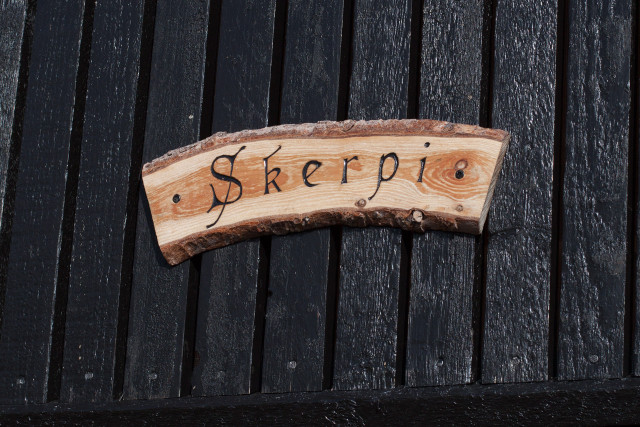
So, a few hours after leaving Copenhagen I was dropped directly into the depth of the Faroese food traditions. What a wonderful start on the trip.
To be continued…

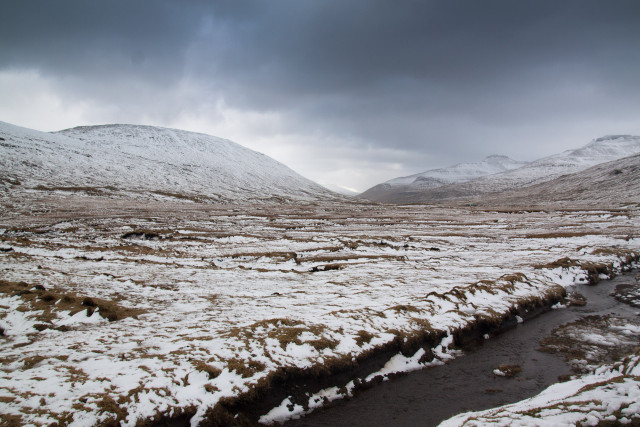
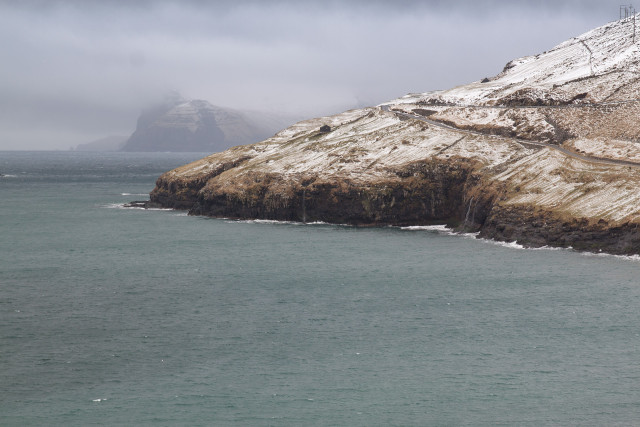
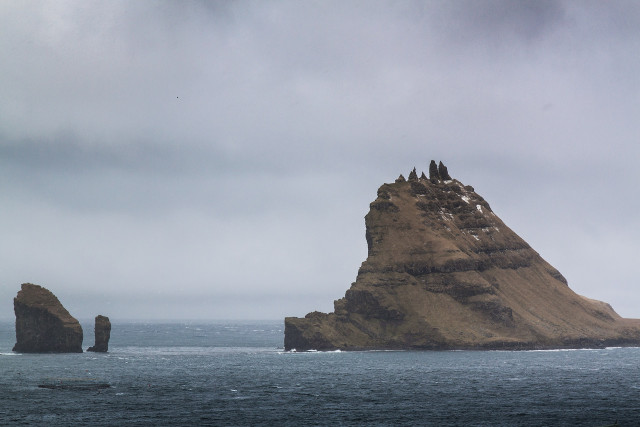
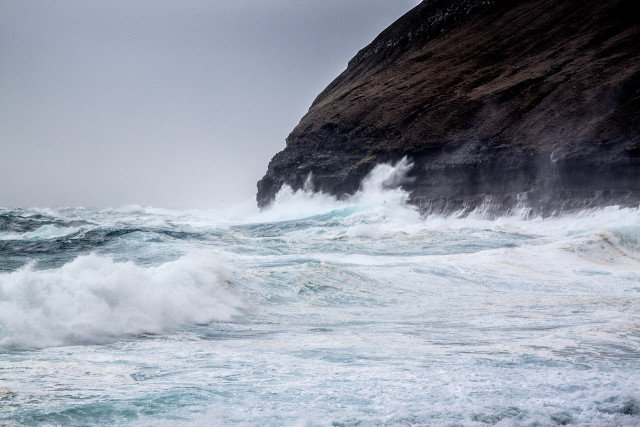
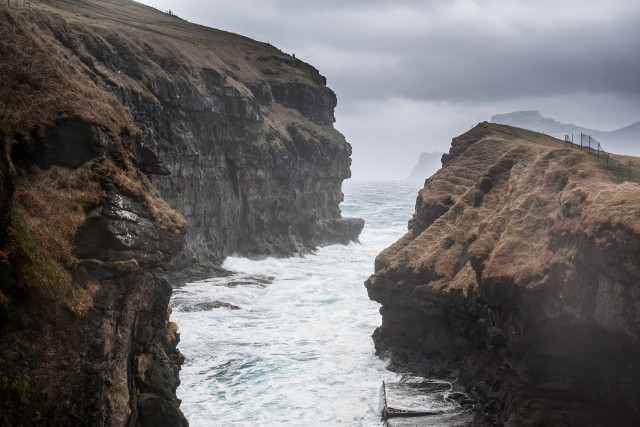
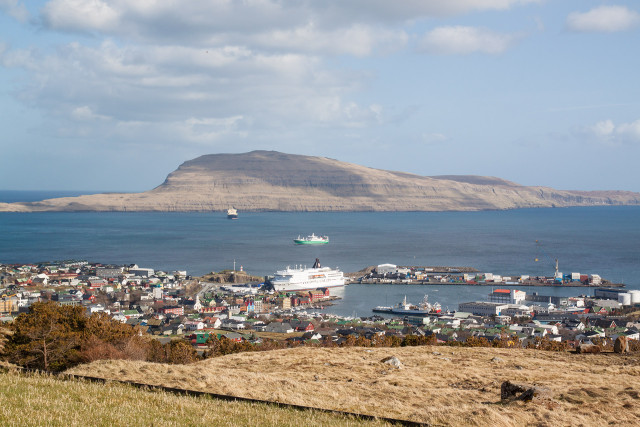
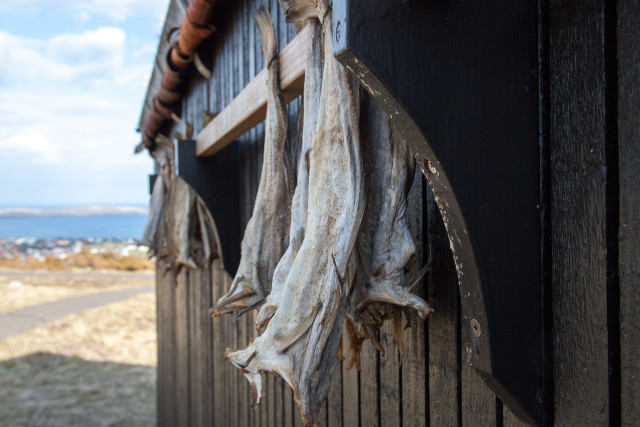
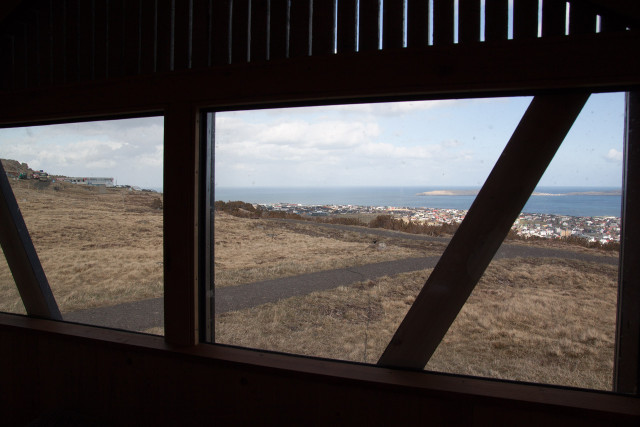
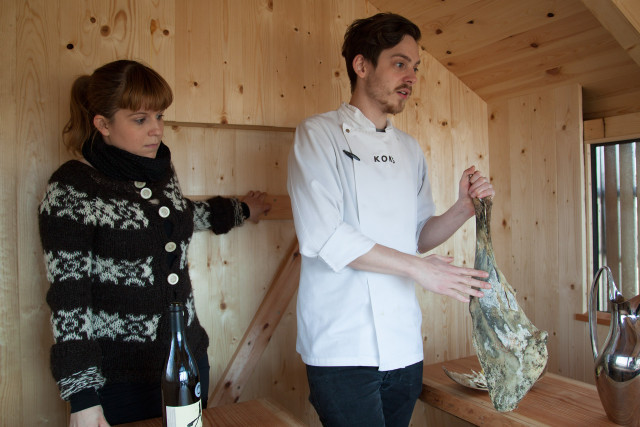
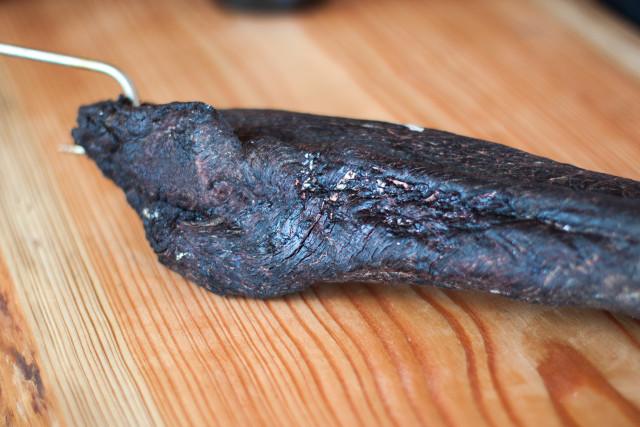
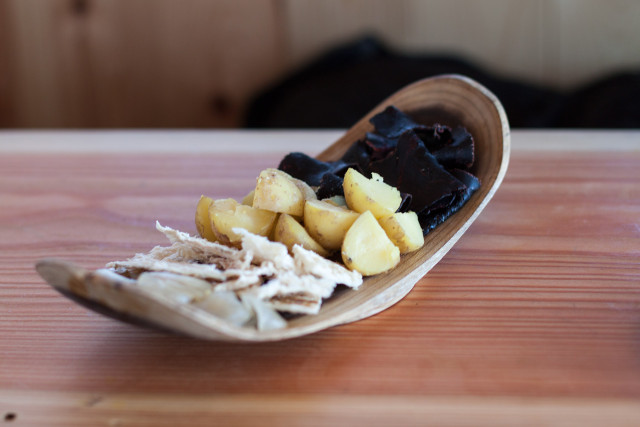
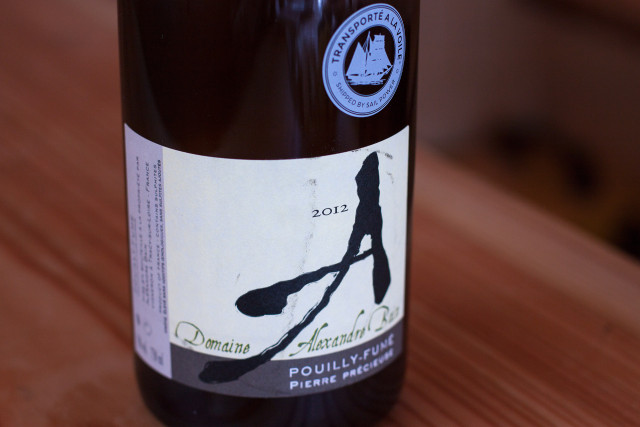
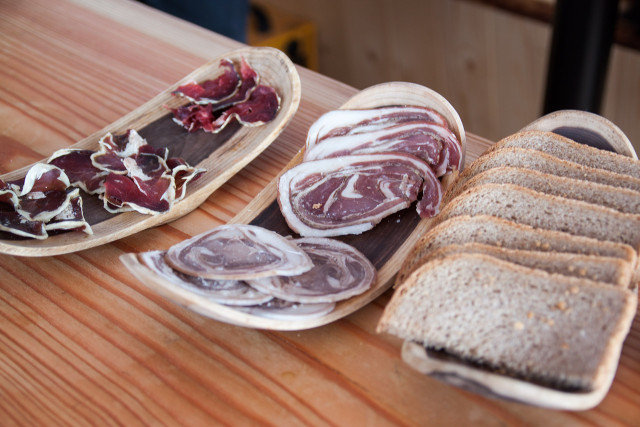
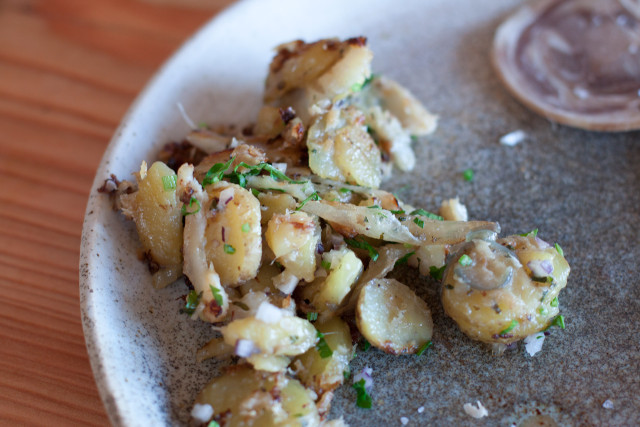
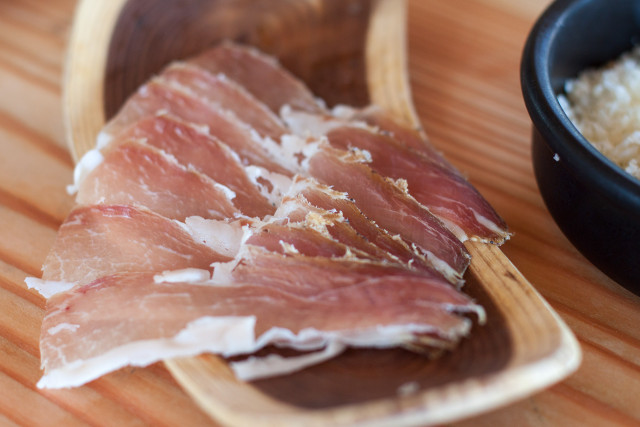
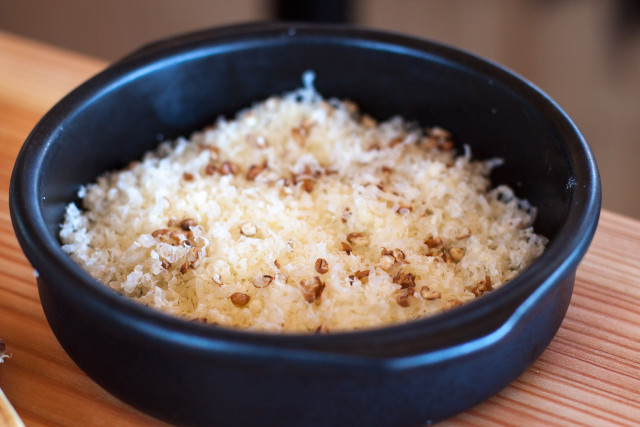
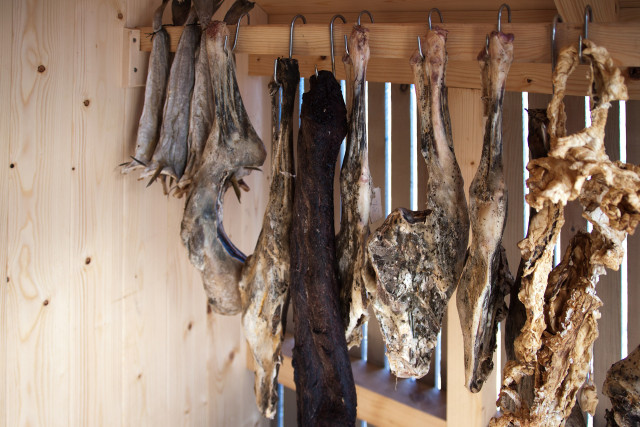
0 Responses to “Discovering The Faroe Islands – Skerpi”